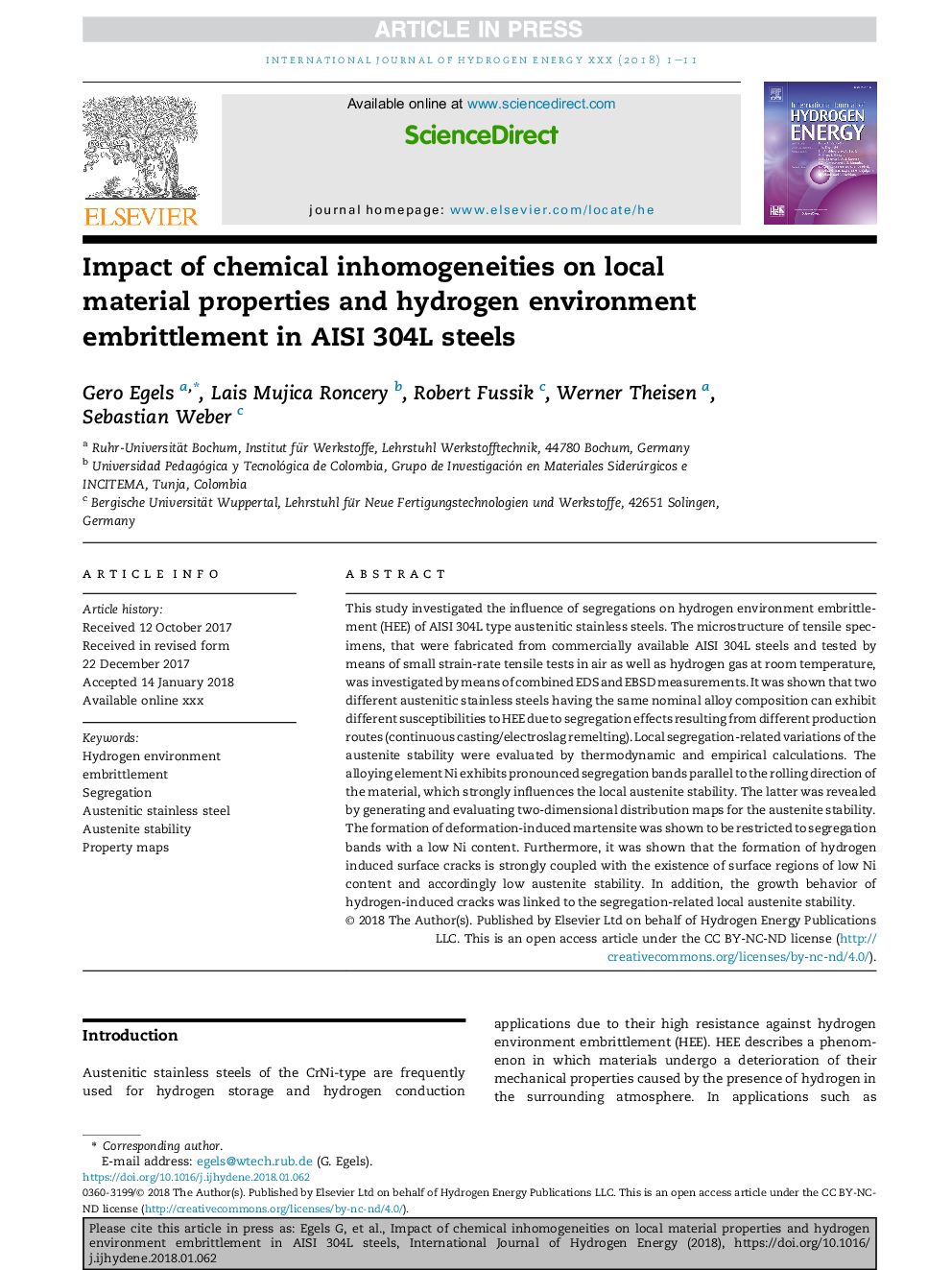| Article ID | Journal | Published Year | Pages | File Type |
|---|---|---|---|---|
| 7707360 | International Journal of Hydrogen Energy | 2018 | 11 Pages |
Abstract
This study investigated the influence of segregations on hydrogen environment embrittlement (HEE) of AISI 304L type austenitic stainless steels. The microstructure of tensile specimens, that were fabricated from commercially available AISI 304L steels and tested by means of small strain-rate tensile tests in air as well as hydrogen gas at room temperature, was investigated by means of combined EDS and EBSD measurements. It was shown that two different austenitic stainless steels having the same nominal alloy composition can exhibit different susceptibilities to HEE due to segregation effects resulting from different production routes (continuous casting/electroslag remelting). Local segregation-related variations of the austenite stability were evaluated by thermodynamic and empirical calculations. The alloying element Ni exhibits pronounced segregation bands parallel to the rolling direction of the material, which strongly influences the local austenite stability. The latter was revealed by generating and evaluating two-dimensional distribution maps for the austenite stability. The formation of deformation-induced martensite was shown to be restricted to segregation bands with a low Ni content. Furthermore, it was shown that the formation of hydrogen induced surface cracks is strongly coupled with the existence of surface regions of low Ni content and accordingly low austenite stability. In addition, the growth behavior of hydrogen-induced cracks was linked to the segregation-related local austenite stability.
Related Topics
Physical Sciences and Engineering
Chemistry
Electrochemistry
Authors
Gero Egels, Lais Mujica Roncery, Robert Fussik, Werner Theisen, Sebastian Weber,
